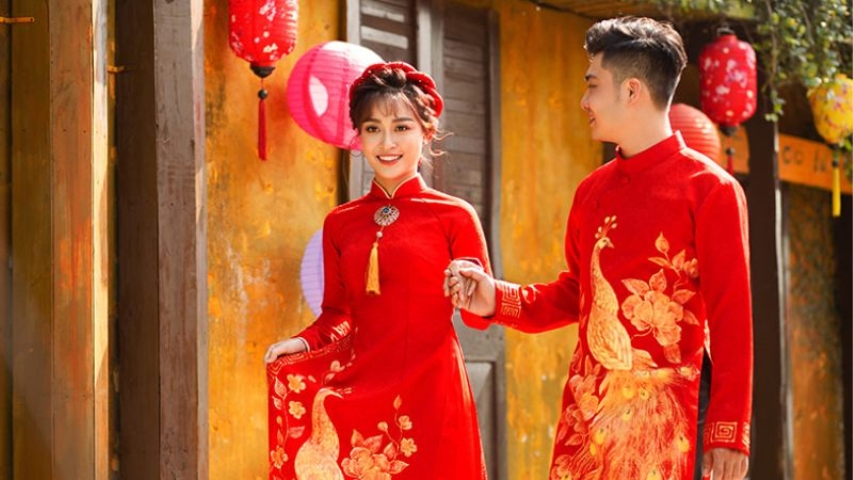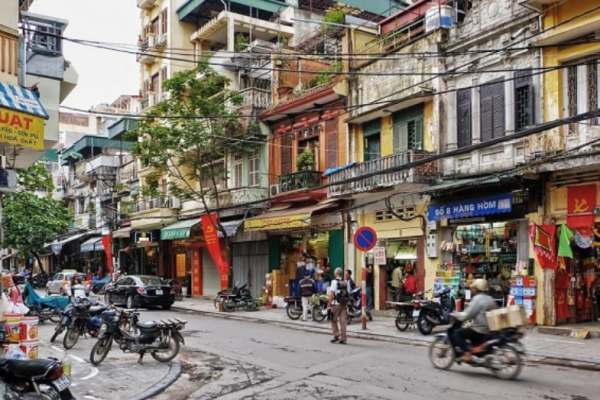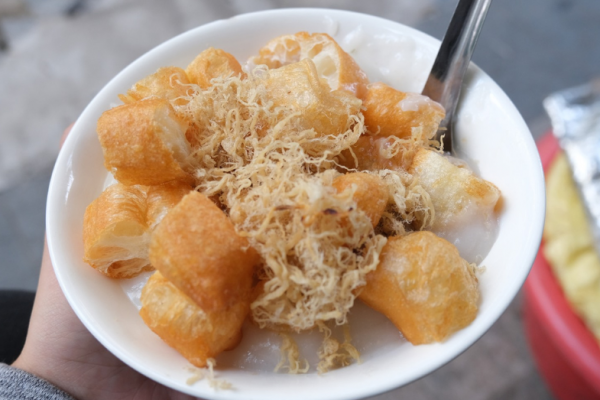“Áo Dài”: The Quintessence of Vietnam Culture Traditions and Fashion
As a passionate blogger and cultural enthusiast, VietNamLocalGuide is thrilled to share with you the rich tapestry of Vietnam's heritage through one of its most iconic symbols - the Áo Dài. This traditional Vietnamese garment is not just a piece of clothing; it's a poignant emblem of the nation's history and a vibrant manifestation of Vietnam culture traditions. Let’s embark on this journey to explore the Áo Dài's historical roots, its profound meanings, and why it continues to captivate hearts worldwide.
1. The Historical Evolution of the Áo Dài
Originating from Antiquity
The Áo Dài's story is a fascinating one, tracing back over 2000 years. The legend of the Trưng Sisters, Vietnam's revered heroines who rebelled against Chinese rule, often depicts them in garments resembling the early Áo Dài. This image is further echoed in artifacts like the Ngọc Lũ and Hòa Bình drums, showcasing the garment's ancient roots.
.jpg)
Transformation Through the Ages
From the simple yet elegant Áo Giao Lĩnh of ancient times to the Áo Tứ Thân in the 17th century, the Áo Dài has undergone remarkable transformations. Each period, from the reign of King Gia Long to the innovative designs of Lemur and Lê Phổ, reflects a specific era's social and cultural nuances. By the 1970s, the Áo Dài evolved into the sophisticated form we see today.
Contemporary Reinvention
In modern times, Vietnamese designers have skillfully blended tradition with innovation. The traditional Áo Dài has been reimagined as wedding attire, modernized with intricate beading and embroidery, and even adapted into everyday wear with shorter hems and varied necklines. This evolution signifies the Áo Dài's versatility and its adaptability to the dynamic lifestyle of contemporary Vietnam.
2. The Philosophical and Aesthetic Significance of the Áo Dài
2.1. A Garment Steeped in Philosophy
The Áo Dài, in its essence, is a profound reflection of Vietnamese philosophy and ethics. It's fascinating how a piece of clothing can encapsulate such deep values. The traditional five-panel design, a staple in the structure of the Áo Dài, is not a mere fashion choice. Each panel is a representation of the five virtues of humanity deeply embedded in Vietnamese culture: kindness (nhân), decorum (lễ), uprightness (nghĩa), wisdom (trí), and faithfulness (tín). These virtues are foundational to the Confucian ethos that has shaped Vietnamese society for centuries.
The alignment of the panels, meticulously sewn together, symbolizes the harmony and balance essential in life and relationships. The garment's flowing form, covering the body yet accentuating the figure in a respectful and dignified manner, mirrors the Vietnamese belief in the beauty of subtlety and inner virtues over outward appearances.
When one dons the Áo Dài, they are not only embracing a cultural garment but also embodying the principles that have guided generations of Vietnamese people.
2.2. Celebrating Feminine Beauty
.jpg)
The Áo Dài is renowned for its elegance, a garment that gracefully accentuates the beauty of Vietnamese women. Its unique design, with a form-fitting bodice and flowing trousers, offers a silhouette that is modest yet striking, embodying a blend of tradition and modernity. This traditional dress is a symbol of feminine beauty that respects the values of Vietnamese culture while highlighting the wearer's grace and poise.
The design of the Áo Dài is deeply thoughtful, reflecting the Vietnamese cultural emphasis on modesty and dignity. The high collar and long sleeves provide coverage, while the split sides of the dress offer ease of movement, creating a perfect balance between modesty and practicality. This balance is a key aspect of the garment’s appeal, allowing the wearer to express themselves with both respect for tradition and a sense of personal style.
For many Vietnamese women, wearing an Áo Dài is a proud expression of their identity. It is a declaration of their cultural heritage, a way to connect with their roots, and a medium to display their personal aesthetics
2.3. A Cultural Breath
The Áo Dài, with its deep roots in Vietnam's cultural life, resonates as a breath of the nation's rich heritage. It is not merely a garment but a living symbol that breathes life into various aspects of Vietnamese society. Its significance stretches beyond personal fashion
During weddings, it is common to see the bride adorned in a beautifully embroidered Áo Dài, symbolizing her roots and the continuation of traditions. Similarly, during Lunar New Year (Tết) celebrations, families don Áo Dài as a sign of respect and unity. It acts as a connector with Vietnam culture traditions.

Many schools have incorporated the Áo Dài into their uniforms, instilling a sense of national pride and cultural identity among students. In professional settings, the Áo Dài is often worn as a symbol of respect and formality, reflecting the wearer's dedication to maintaining cultural values in a modern context.
On the global stage, the Áo Dài has become an ambassador of Vietnamese culture. Whether it's at international diplomatic events, cultural festivals, or fashion shows, the Áo Dài stands out for its elegance and cultural significance. It introduces the beauty of Vietnamese traditions to the world and evokes interest and respect for the nation's heritage.
Conclusion
The Áo Dài is more than just a traditional outfit; it's a living narrative of Vietnamese culture and traditions. It's a symbol of unity and familial bonds, a testament to the enduring spirit of the Vietnamese people. As we delve into Vietnam culture traditions, the Áo Dài stands as a proud and evolving emblem of national identity and heritage, continually adapting yet steadfastly preserving its essence.
Through my experiences and observations, I've come to appreciate the Áo Dài not just as a garment but as a cultural icon that encapsulates the soul of Vietnam. VietNamLocalGuide hopes this blog inspires you to explore and embrace the rich cultural heritage of Vietnam, as beautifully represented by the timeless Áo Dài.
See more
-

Hanoi Old Quarter: What keeps tourists coming?
Hanoi Old Quarter , is one of the most attractive destinations to explore and experience the traditional culture of the capital Hanoi, Vietnam. With more than 1,000 years of history, this...
-

Hanoi food: Unique dishes that you should try when coming to Hanoi
Referring to Hanoi food , or more broadly, dishes in Vietnam. Foreign tourists will immediately enjoy dishes like Pho, Banh Mi, Egg Coffee, etc. These dishes seem to have become trademarks and no...
-

Hanoi attraction: Activities that attract tourists in Hanoi
Hanoi, the capital of Vietnam, is an attractive destination with rich historical culture, beautiful landscapes, and friendly people. Below are some activities in Hanoi attraction tourists when...
-

Ha Noi: The most romantic city in Vietnam
Referring to the most romantic cities. Surely many people often think of Venice in Italy or Paris in France. However, in Southeast Asia there is also an extremely romantic city that has captivated...
-

10 Vietnam beaches that you should visit once
With more than 3,200 km of coastline, it is no surprise that Vietnam possesses many beautiful beaches and many small bays with smooth white sand and clear blue sea water. These are ideal...